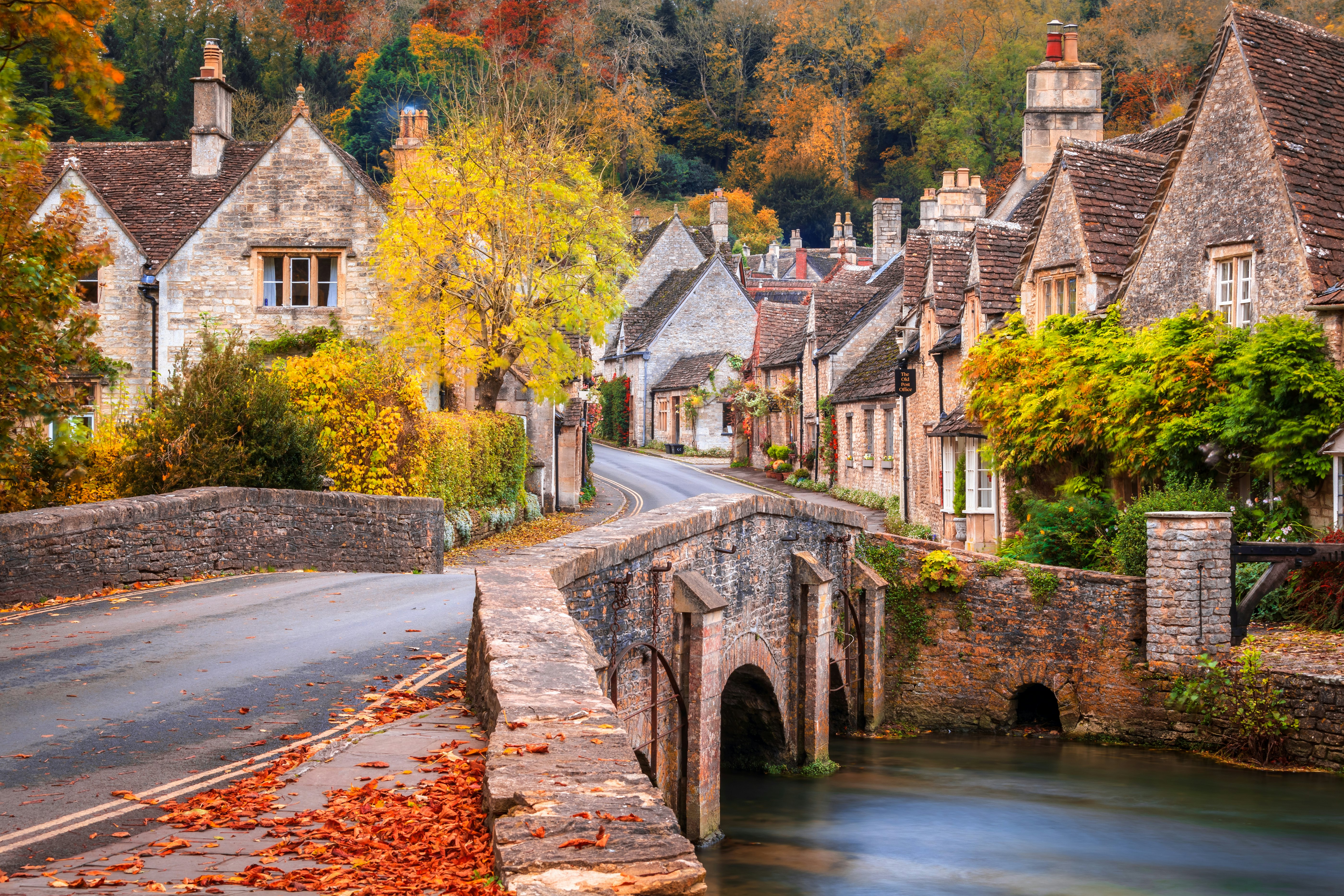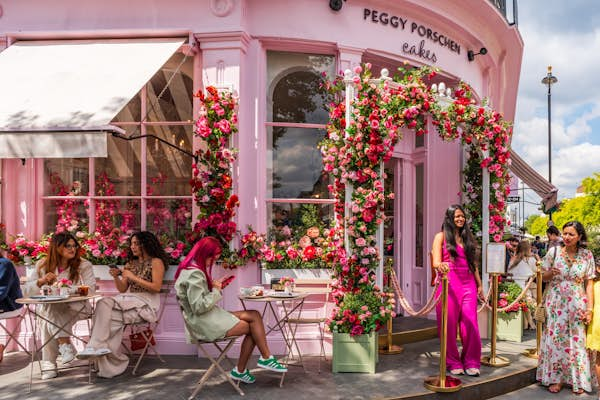The UK is a country of grand traditions, quirky customs and an unwavering love for a good festival. Beyond the revelry, this is also a nation defined by rolling countryside, windswept coastlines, dramatic peaks and historic cities. The diversity of the United Kingdom is part of its charm. The Brits famously drive on the left, drink warm beer and tea with milk; they’re proud to patiently queue, and wear crazy hats to watch horses race. Blame it on the dreary weather or their self-deprecating sense of humor, but the UK consists of eccentrics who delight in being, well, that bit different.
Deciding when to visit this curious country depends on what you’re looking for. The shoulder seasons (March to May; September and October) are your best bet for fewer crowds and increasingly clement weather (but still pack a raincoat!). The Great British Summer – as June to August is often christened – is when most of the UK flees to the seaside and hikers flock to the national parks as the likes of Bath, Oxford, Edinburgh and York start to teem with tourists.
Advertisement
The festival season won’t sleep till late September but come the latter half of fall – when the Chiltern Hills turn gold and red for leaf-peeping season – you’ll see some attractions and hotels start to shutter. Still, London, Cardiff and Glasgow are all magical beneath the sparkling festive lights and among the busy Christmas markets. There’s even the chance to go skiing in Scotland.

March to May is best for mild weather and blooming gardens
In spring (March to May), the countryside awakens with wildflowers, bluebell-carpeted forests, and gardens in full bloom. The weather is mild, with temperatures ranging from 10–18°C (50–65°F), although rain showers are common, so be sure to pack a raincoat. This is a great time for walking tours and outdoor adventures (whether in the city or the countryside) without the peak summer crowds.
This is a great time of year for garden-hopping and this nation happens to be garden-obsessed. In spring, you’ll see locals strolling and picnicking in grand gardens that were once the pleasure grounds of palaces, castles and stately manor houses. Some of the favorites are London’s Kew Gardens with its iconic glasshouses and treetop walkways, the National Botanic Garden of Wales with Regency-style water features, the beautifully landscaped grounds of Blenheim, and the Eden Project, a haven for plant lovers.
Key events: Beltane, Ludlow Spring Festival, Cooper’s Hill Cheese Rolling, Fèis Ìle, Brighton Festival

June to August is the best time for summer festivals and outdoor activities
Summer in the UK is a time of long days, lively festivals and outdoor adventures. With temperatures ranging from 15–25°C (59–77°F), the season brings the best weather for exploring, but it also means bigger crowds and higher prices. The sun doesn’t always shine – the UK’s unpredictable rain showers can pop up at any time – but when the skies are clear, the coastal paths are at their most inviting and cities hum with positive energy.
Advertisement
Tourist hotspots like London, Edinburgh, and the Lake District are at their busiest, making early reservations for accommodations as well as popular attractions essential. Beach destinations in Cornwall, Devon, and coastal Wales fill up quickly, while Scotland’s Highlands offer long daylight hours for hiking and exploring remote landscapes.
Summer in the UK is when the outdoors really shows off, from hiking Britain’s National Trails and cycling the South Downs Way to surfing Atlantic waves on Fistral Beach and biking over the heather-misted North York Moors. If you’re looking for a quieter experience, consider visiting in early June before peak crowds arrive or exploring lesser-known areas like Northumberland or the Yorkshire Dales.
Explore diverse landscapes, from the chalk cliffs of the south to the Scottish Highlands. For bigger adventures, try windsurfing on the Isle of Wight, kayaking the Jurassic Coast, surfing the waves in North devon, hiking in Scotland, coasteering in Pembrokeshire, wild swimming in the Lake District, caving in Cheddar, or zip-lining in Blaenau Ffestiniog.
Key events: Summer solstice, Glastonbury Festival, Edinburgh Festival Fringe, Brighton & Hove Pride, Falmouth International Sea Shanty Festival, Notting Hill Carnival, Ludlow Magnalonga

September to October is best for autumn colors and fewer crowds
Autumn (September and October), on the other hand, paints the landscape in deep reds and golds, particularly in England’s Lake District and the Scottish Highlands, where rolling hills and forests burst into seasonal color. Autumn brings cooler temperatures, ranging from 7–15°C (45–59°F), and crisp, fresh air. While the landscape is stunning, expect more rain, especially in the northern regions, adding to the atmospheric beauty of the season. These months bring fewer tourists and lower prices compared to summer, making it easier to find accommodations and enjoy popular attractions without spending as much.
The best time to explore Britain’s picturesque villages, like those in Suffolk, the Cotswolds, Snowdonia and the Lake District, is during autumn, when scenic walks through rose gardens and historic courtyards are at their peak.
Key events: Abergavenny Food Festival, Ludlow Food Festival, Halloween

November to April is the best time for budget travel and comfort food
Winter and early spring in the UK brings chilly temperatures, shorter days, and fewer tourists, making it the best time for budget-conscious travelers. With temperatures averaging 0–7°C (32–45°F), this is the wettest and coldest time of year, particularly in northern regions like Scotland and the Lake District, where heavy rainfall and occasional snowfall are common. The persistent rain can create a moody atmosphere, ideal for cozy indoor activities, but it also means you’ll want to pack waterproof gear for outdoor adventures.
Accommodation prices drop significantly outside of the Christmas and New Year period, and popular city attractions are quieter, making it easier to explore without the summer crowds. However, some rural sites and seasonal attractions close, reduce hours, or specific sections available to visit, in January and February, so it’s best to check ahead online to make sure must-see sights are open before you book your travel. Historic houses in particular are often on reduced hours and gardens are closed for winter maintenance.
However, for travelers who embrace the winter chill, this season offers unique experiences. Across the country, Bonfire Night (also known as Guy Fawkes Night, November 5th or the weekend before) is celebrated with fireworks, local bonfires and effigy burning. Christmas markets bring festive sparkle to cities like Cambridge, Norwich, and Winchester, where wooden chalet stalls, twinkling lights, and mulled wine set the mood. London’s Hyde Park transforms into a winter wonderland with its festive funfair and ice rink, while the New Forest’s countryside pubs, with roaring fireplaces, provide the perfect retreat after a brisk winter walk. Winter swimming and sauna culture has also taken off in the UK in the city as well as the coast.
Looking for something more adventurous? Head to the Scottish mountains. Aonach Mòr brims with activity in all seasons but come winter, skiers, snowboarders, ice climbers and avalanche-awareness guides congregate at Nevis Range ski area to tackle the UK’s most accessible high-altitude scenery. There’s a chance of snow across the UK from December to April, but late January and February are the most likely. Winter travelers can also take advantage of fewer crowds at major sites, like the Tower of London or Edinburgh Castle.
Key events: Guy Fawkes Night (November 5th), Up Helly Aa Fire Festival, Stonehaven Fireball Festival
This article was adapted from Lonely Planet’s Great Britain guidebook, published in July 2023.

